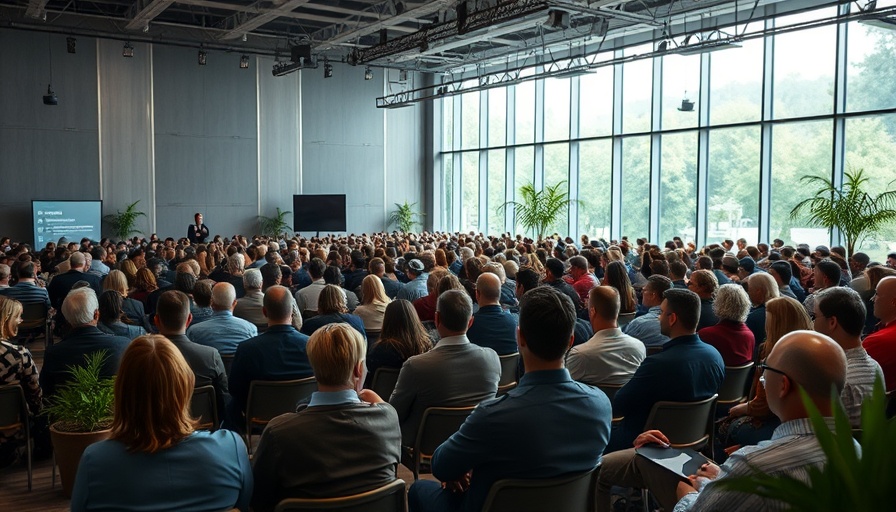
The Expanding Role of Dutch Horticulture in Food Production
In recent discussions at the National Horticulture Congress, industry leaders expressed concerns about the common misconception that the horticulture sector does not play a critical role in food supply and green space allocation. Yet, with a production value of over 30 billion euros, it's vital to highlight the sector's contributions not just to the economy, but to societal wellbeing.
The Urban-Rural Shift: Challenges and Opportunities
As cities expand and prime agricultural land is gradually repurposed for urban development, the horticultural sector faces significant challenges. Architect Floris Alkemade pointed out that as the population grows, food supply becomes more critical. The need for innovative solutions, such as multilayered greenhouses, could bridge the gap between urban development and agricultural sustainability, ensuring food security while maintaining green spaces amidst urban sprawl.
Shaping a Sustainable Future for Horticulture
The challenge lies not only in how food is produced but also in how the public perceives horticulture's impact on their diets and environments. Adri Bom-Lemstra, chairwoman of Greenports Nederland, emphasized the responsibility her sector carries in promoting healthy eating and green environments. There's an evident gap in the marketing budget which hinders effective public outreach and education. If the sector is to thrive and shift public perception, increased investment in collective marketing efforts may be necessary.
The Health Impact of Consumption
Health expert and plant biologist Jan van den Berg presented alarming statistics about the Dutch diet, noting that most citizens don’t consume adequate amounts of fruits and vegetables. His analysis suggests that a slight increase in consumption could lead to substantial savings in healthcare costs, potentially reducing expenses by up to 8.75 billion euros. Such figures showcase the dual role of horticulture—not only as a means of food production but as a preventative health measure.
Educating for Change: Engaging Consumers
Addressing the gap between supply and consumption requires effective campaigns that resonate with consumers. Engaging modern marketing strategies in the sector, coupled with the initiatives underway like the European strawberry campaign, underscore the importance of collaboration in driving public interest in healthier eating habits. The horticulture industry must prioritize educating consumers about the value of their products to foster a healthier society.
Conclusion: The Way Forward
The current landscape of the Dutch horticultural sector illustrates a crucial crossroads. With adaptable strategies and a commitment to consumer education, the sector can enhance its visibility and underscore its value. The future also rests in the hands of the industry stakeholders who must advocate for and communicate the essential role of horticulture in fostering both food security and environmental sustainability.
 Rij toevoegen
Rij toevoegen






Write A Comment